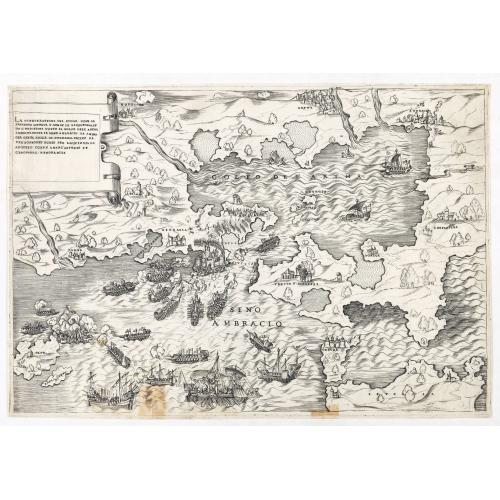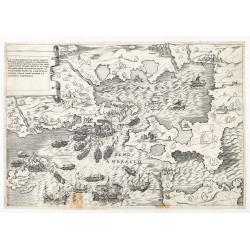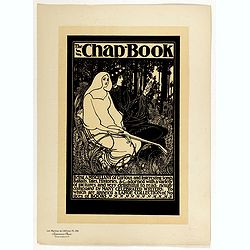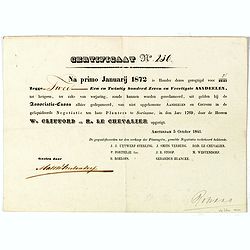La dimostratione del luogo dove al presente sitrova l'armat di Barbarossa, et de Christiani detto il golfo dell 'Artha anti ch amente il sino ambracio… |
||||||||||||||||||||
|
||||||||||||||||||||
|
|
||||||||||||||||||||
$8000 / ≈ €7048This item is available for immediate sale! Questions before Buying ?
We are happy to answer your questions. Feel free to contact us if you have a question about this item.
Or do you like to be notified about newly added items? Add your name to our mailing list.
8000.00
|
||||||||||||||||||||
Description
Very Rare Map Showing the Largest Naval Battle of the First Half of the Sixteenth Century -- And The Site of Octavius' Historic Battle with Antony and Cleopatra.
A rare and vibrant map of the Gulf of Artha showing the pivotal Battle of Preveza, engraved in Rome by Antonio Salamanca, also includes historical references to the Battle of Actium, which pitted Octavius against Antony and Cleopatra.
"Fought in 1538, the Battle of Preveza pitted the famed Ottoman commander and former pirate, Hayreddin Barbarossa, against a combined Holy League consisting of Spanish, Papal, Genoese, Venetian, and Maltese ships led by Andrea Doria. The Ottoman victory cemented Ottoman supremacy in the Mediterranean until the Battle of Lepanto in 1571 and is generally considered the largest naval battle of the 16th century until Lepanto in 1571.
The map shows the strategic geographic feature on the western side of the Greek peninsula, just south of Corfu. The waters are shown in three ways: shallow bays are marked with dashed parallel lines, calm waters and deeper inlets have solid parallel lines, and deep, open waters are shown as rolling waves.
It is on these waves that the action of the battle took place. Galleys rowed by slaves maraud the waters, mounted with artillery in their bows. Both sides had such galleys, but they were the principal vessels of the Ottoman forces, giving them an advantage in maneuverability.
The sailing ships were chiefly under the command of the Holy League, making them dependent on the winds. This dependency came with a price, as seen here. The image shows crewmen frantically trying to unfurl sails in one ship while others are shown leaping from a burning vessel, its sails alight. Although this was primarily a naval battle, some Ottoman troops were stationed on land, as seen here with their camp behind Preveza. Other settlements nearby are reduced to smoking ruins.
Interestingly, a faint “37” is printed in the waters near the ship in the top right corner. The meaning of this number is unknown. The rest of the script printed here was achieved using letter punches.
While the map is unsigned, experts confidently attribute the work to Salamanca. Antony and Cleopatra in Actium.
While the 1538 battle was decisive, the upper left cartouche reminds the viewer of much older events. The gulf used to be known as the Gulf of Ambracio, and it housed the city of Pyrrhus in the fourth century BCE. Another naval engagement took place nearby, this one between Octavius and the legendary Antony and Cleopatra.
When Antony and Cleopatra joined forces in 41 BCE, the former’s relationship with Octavius, Julius Caesar’s chosen heir, grew strained. A decade later, Octavius declared war against Cleopatra. Their forces met in at the Battle of Actium, which is across the strait from Preveza. It is marked here with the temple of Apollo that stood in ancient Actium.
The superior forces of Octavius overwhelmed those of Antony and Cleopatra. The two separately broke through the enemy’s ranks and fled. This decisive defeat spelled doom for the couple. Within a year, Octavius attacked Alexandria. After the battle, which Antony lost, he was told that Cleopatra had died. Distraught, he stabbed himself, only to be told that she still lived. He lived long enough to tell her to make peace. She spoke with Octavius, but then committed suicide herself.
Barbarossa and the Battle of Preveza
The battle depicted here was no less monumental than that fought by Antony and Cleopatra fifteen hundred years earlier. Its protagonists included the most notorious pirate and naval commander of the Ottoman Empire, Hayreddin Barbarossa. The son of a successful potter and merchant from Lesbos, Khiḍr, as he was named, and his brothers initially took to sea to trade legitimately. However, as tensions rose between Christian and Ottoman forces, especially in North Africa, the brothers became privateers under the command of Korkud, a son of the Ottoman sultan Bayezid II.
Eager to avoid the politics of regime change in the Ottoman Empire, the brothers settled in North Africa and raided from there. In 1516, they took Algiers. This victory drew Ottoman attention and the brothers increasingly worked alongside and within the empire's operations. Khiḍr became known as Barbarossa, or Red Beard, and was named governor of Rhodes in 1522. He also took Tunis in 1531. After scattering a Christian force under Genoese Admiral Andrea Doria, Khiḍr was granted the title of Hayreddin, or best of the faith. Soon thereafter, Pope Paul III assembled a Holy League to take on Barbarossa. Ironically, Doria was placed at the head of 112 galleys, 50 galleons, 140 barks, and 60,000 soldiers. Barbarossa, sailing to meet him, had 122 galleys and galliots with 12,000 soldiers—he was outnumbered three ships to one.
After attempts to dislodge the Ottomans from their strongholds at Preveza and Actium, Doria drew his fleet away. Barbarossa approached the back of the overextended Holy League ships at dawn of September 27, 1538, throwing them into disarray. He attacked the Venetians and Maltese, who thought Doria was coming to support them. Left adrift with no wind, the ships fought. The Ottomans had swifter, more agile vessels, but the Venetians had a massive flagship that could fire double broadsides.
Doria attempted to draw Barbarossa out to sea, but the Ottoman commander was too clever to abandon the shelter of the coast. On the morning of the 28th, Doria sailed for Corfu, where the Venetian flagship had limped, abandoning the battle. Barbarossa had won. His ships sank ten Holy League vessels, burned three, and captured 3,000 prisoners. Comparably, he lost no ships, although some were damaged, with 400 dead and 800 wounded. The battle established Ottoman naval supremacy for the next three decades". [Source: raremaps.com]
A unique opportunity to acquire a fine example of a map from the early Lafreri School.!
Read more about the Lafreri School [+]
Reference: Bifolco/Ronca (2018), Tav. 678 ; Tooley, 290
FAQ - Guarantee - Shipping
Buying in the BuyNow Gallery
This item is available for immediate purchase when a "Add to Cart" or "Inquire Now" button is shown.
Items are sold in the EU margin scheme
Payments are accepted in Euros or US Dollars.
Authenticity Guarantee
 We provide professional descriptions, condition report (based on 45 years experience in the map business)
We provide professional descriptions, condition report (based on 45 years experience in the map business)
Paulus Swaen warrants the authenticity of our items and a certificate of authenticity is provided for each acquired lot.
Condition and Coloring
We indicate the condition of each item and use our unnique HiBCoR grading system in which four key items determine a map's value: Historical Importance, Beauty, Condition/Coloring and Rarity.
Color Key
We offer many maps in their original black and white condition. We do not systematically color-up maps to make them more sellable to the general public or buyer.
Copper engraved or wood block maps are always hand colored. Maps were initially colored for aesthetic reasons and to improve readability. Nowadays, it is becoming a challenge to find maps in their original colors and are therefor more valuable.
We use the following color keys in our catalog:
Original colors; mean that the colors have been applied around the time the map was issued.
Original o/l colors; means the map has only the borders colored at the time of publication.
Colored; If the colors are applied recently or at the end of the 20th century.
Read more about coloring of maps [+]
Shipping fee
A flat shipping fee of $ 30 is added to each shipment by DHL within Europe and North America. This covers : International Priority shipping, Packing and Insurance (up to the invoice amount).
Shipments to Asia are $ 40 and rest of the world $50
We charge only one shipping fee when you have been successful on multiple items or when you want to combine gallery and auction purchases.
Read more about invoicing and shipping
FAQ
Please have a look for more information about buying in the BuyNow gallery
Many answers are likely to find in the general help section.
Virtual Collection
![]()
With Virtual Collection you can collect all your favorite items in one place. It is free, and anyone can create his or her Virtual map collection.
Unless you are logged in, the item is only saved for this session. You have to be registed and logged-in if you want to save this item permanently to your Virtual Collection.
Read More[+]
Register here, it is free and you do not need a credit card.
Add this item to
Virtual Collection
or click the following link to see my Virtual Collection.
| High-Resolution Digital Image Download | |
|
Paulus Swaen maintains an archive of most of our high-resolution rare maps, prints, posters and medieval manuscript scans. We make them freely available for download and study. Read more about free image download |
In accordance with the EU Consumer Rights Directive and habitually reside in the European Union you have the right to cancel the contract for the purchase of a lot, without giving any reason.
The cancellation period will expire 14 calendar days from the day after the date on which you or a third party (other than the carrier and indicated by you) acquires, physical possession of the lot. To exercise the right to cancel you must inform Paulus Swaen Europe bv, which is offering to sell the lot either as an agent for the seller or as the owner of the lot, of your decision to cancel this contract by a clear statement (e.g. a letter sent by post, or e-mail (amsterdam@swaen.com).
To meet the cancellation deadline, it is sufficient for you to send your communication concerning your exercise of the right to cancel before the cancellation period has expired.



![[Text page with Kings and historical personalities.] Quita etas mundi. Foliu. LXXXIII](/uploads/cache/26874-250x250.jpg)
